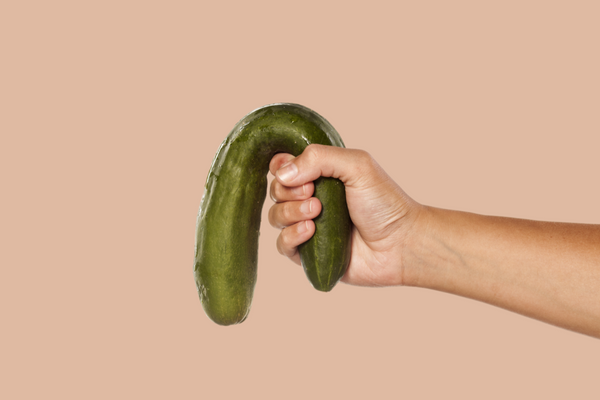This guide explores the root causes, symptoms, treatment options, and preventive strategies for managing scalp yeast infections in a tropical setting. By identifying early signs and utilizing evidence-based interventions, Filipinos can take control of scalp health and prevent complications such as hair loss and recurring inflammation.
What Is a Scalp Yeast Infection?
A scalp yeast infection occurs when there is an overgrowth of yeast—most commonly Malassezia, a genus of fungi that exists as part of the skin’s normal flora. This organism feeds on excess sebum and thrives in warm, moist environments. While its presence is usually harmless, factors like excessive oil production, disrupted skin barriers, or poor hygiene can trigger fungal proliferation, resulting in inflammation and symptomatic discomfort. Clinically, this condition is often classified as seborrheic dermatitis when it manifests with scaling and redness. In some cases, it may evolve into a more aggressive form involving the hair follicles, known as fungal folliculitis. The Cleveland Clinic notes that these fungal conditions are not only common but frequently underdiagnosed due to symptom overlap with non-fungal scalp disorders.
Causes of Scalp Yeast Infections
Multiple environmental, biological, and behavioral factors contribute to the onset of scalp yeast infections, many of which are amplified by the tropical climate in the Philippines.
1. Climate and Environment
The Philippines’ high humidity and elevated temperatures create ideal conditions for fungal overgrowth. Yeast organisms flourish in moist environments, particularly in areas where sweat and oil accumulate, such as the scalp, forehead, and neck.
2. Sebum Overproduction
The scalp contains numerous sebaceous glands that produce oil (sebum). Individuals with naturally oily scalps are more prone to fungal infections, as sebum serves as a food source for Malassezia. A study published by the VA Office of Patient Centered Care and Cultural Transformation highlights that Malassezia colonization is significantly higher in individuals with seborrheic dermatitis compared to those without.
3. Poor Scalp Hygiene
Infrequent shampooing, improper rinsing, or using comedogenic hair products can cause residue buildup. This buildup can trap sweat and dead skin cells, increasing the risk of microbial imbalance and fungal activity.
4. Compromised Immune Function
Immunocompromised individuals—including those with HIV, diabetes, or chronic stress—are at a greater risk of developing fungal infections. The Centers for Disease Control and Prevention (CDC) explains that yeast infections tend to be more persistent and harder to manage in these populations.
5. Use of Steroid Creams and Harsh Hair Products
Topical steroids, although effective for short-term itch relief, can alter the scalp's microbiome and thin the skin, making it more susceptible to fungal invasion. Similarly, shampoos with harsh sulfates may strip the skin's protective lipid barrier, triggering inflammatory responses.
Symptoms of a Scalp Yeast Infection
Scalp yeast infections may manifest with varying degrees of severity. Common symptoms include:
-
Chronic itchiness, often unresponsive to standard anti-dandruff products
-
Flaky or greasy scales, usually yellowish or white in color
-
Redness or inflammation, particularly along the hairline and behind the ears
-
Localized patches of hair shedding, which may resolve with treatment
-
Burning or tingling sensation, especially during warm weather
-
Oozing pustules or bumps, indicating potential folliculitis
While these symptoms overlap with those of eczema or psoriasis, fungal infections often worsen with humidity and respond to antifungal therapy, providing a key diagnostic clue. DermNet provides a comprehensive overview of how seborrheic dermatitis differs from other inflammatory scalp disorders.
Is It Contagious?
Scalp yeast infections are not classified as contagious. They result from an internal imbalance of skin flora rather than from external infection. Thus, sharing personal items like combs or hats does not typically transmit the condition. Nonetheless, individuals experiencing active symptoms should still avoid sharing such items, especially if secondary bacterial infections are present.
How Scalp Yeast Infections Affect Filipinos
In the Philippine setting, several lifestyle and occupational factors can contribute to the underdiagnosis and undertreatment of scalp yeast infections:
-
Extended helmet or hat use – Motorcycle drivers, construction workers, and security personnel often wear gear for prolonged hours, trapping sweat and heat against the scalp.
-
Urban pollution and stress – Exposure to air pollutants and high stress levels, especially in densely populated cities, can disrupt the skin’s natural defense mechanisms.
-
Cultural grooming habits – The use of oil-based hair products, such as pomades, waxes, and leave-in conditioners, is common but can exacerbate sebum buildup.
A 2022 study in the National Institutes of Health (NIH) noted that people in tropical regions experience higher rates of recurrent seborrheic dermatitis, with symptoms exacerbated by increased sweating and poor ventilation.
Diagnosis and Treatment Options
Dermatologists typically diagnose scalp yeast infections based on clinical presentation. In more persistent cases, a skin scraping may be collected for microscopy or fungal culture. This helps rule out other conditions such as tinea capitis (scalp ringworm), psoriasis, or allergic contact dermatitis. According to the American Academy of Dermatology, correct diagnosis is essential for prescribing the appropriate topical or systemic treatment, particularly when first-line shampoos fail to resolve symptoms.
Effective treatment requires a multi-pronged approach combining antifungal agents, proper hygiene, and—if necessary—prescription medication.
1. Antifungal Shampoos
Medicated shampoos are the first line of defense. Ingredients proven effective against Malassezia include:
-
Ketoconazole (1–2%) – A broad-spectrum antifungal that reduces inflammation and yeast colonization
-
Selenium sulfide (1%) – Lowers oil production and slows fungal growth
-
Zinc pyrithione (1%) – Targets both bacteria and fungi while calming irritated skin
These shampoos should be used two to three times per week, with a contact time of at least 5 minutes before rinsing. The Mayo Clinic recommends alternating with non-medicated, gentle shampoos on off-days.
2. Topical and Oral Antifungals
For more persistent cases:
-
Topical antifungals such as ciclopirox olamine or clotrimazole can be applied directly to problem areas.
-
Oral antifungals like fluconazole or itraconazole may be prescribed for widespread or treatment-resistant infections.
Due to potential liver toxicity, oral antifungals require close monitoring. The U.S. Centers for Disease Control and Prevention cautions that these medications should only be used when topical treatments are insufficient.
3. Corticosteroids (Short-Term Use)
In cases with severe itching or inflammation, low-potency corticosteroids may be prescribed for short durations. However, long-term use is discouraged due to the risk of skin thinning and fungal rebound.
4. Hygiene and Scalp Care
Patients are advised to:
-
Clean their scalp thoroughly after sweating
-
Avoid oil-based hair products
-
Rinse out conditioners and treatments fully
-
Disinfect combs and brushes weekly
Such practices help minimize sebum accumulation and fungal overgrowth, especially in hot, humid climates.
5. Immune and Microbiome Support
Emerging research indicates that gut and skin microbiomes may play a role in recurrent fungal infections. PubMed cites studies suggesting that oral probiotics containing Lactobacillus and Bifidobacterium strains may help modulate immune responses and inhibit yeast growth indirectly.
Natural Remedies
While natural treatments are popular in the Philippines, their efficacy varies:
-
Apple cider vinegar rinses can help lower the scalp’s pH but may cause stinging if applied to irritated skin.
-
Coconut oil contains lauric acid with antimicrobial properties, though it may worsen fungal conditions in oily scalps.
-
Tea tree oil, diluted properly, has antifungal benefits, but allergic reactions are possible.
When to Seek Medical Help
Consult a healthcare provider if:
-
Symptoms persist for more than 4 weeks despite over-the-counter treatment
-
There is visible hair loss or patchy bald spots
-
Scalp lesions ooze or form pustules
-
There is spreading to the face, ears, or nape
-
You have a chronic illness or compromised immunity
Filipino patients may access care through telemedicine platforms or through in-person dermatology clinics.
Supporting Scalp Health in the Philippines
Maintaining a healthy scalp requires more than symptomatic treatment—it demands a proactive approach tailored to the Filipino climate and lifestyle like the guides in Andyou’s Health Club. A structured hygiene routine, along with proper product use and awareness of early signs, can prevent recurrence and reduce reliance on medication. Long-term scalp health is also supported by gentle, balanced hair products designed for tropical conditions. If you're looking for science-backed solutions, explore Andyou’s collection of medical treatments, formulated for Filipinos in humid environments.















